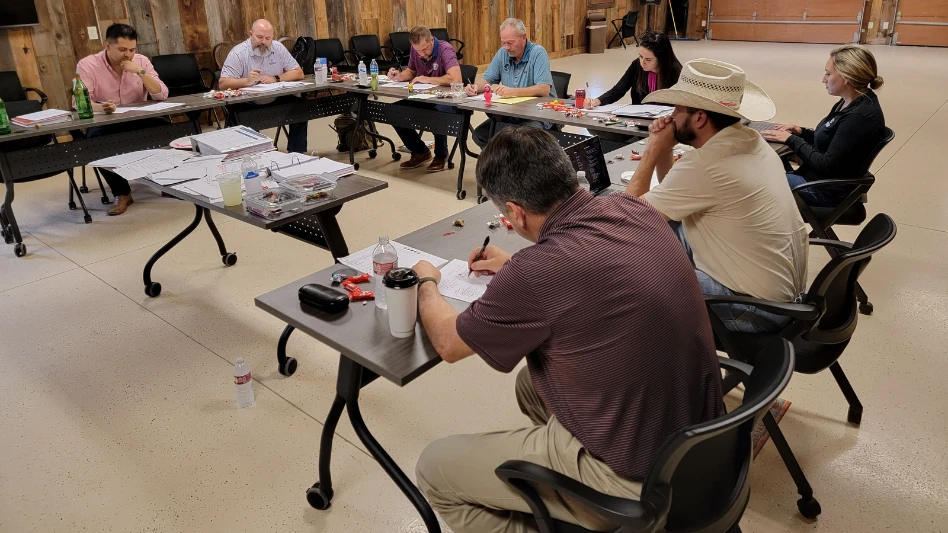Rob Thomas is a Cleveland-based writer and frequent Snow Magazine contributor.

For Gary Benson, the day-to-day conditions of winter 2015-16 were tough to predict.
“This season was very unusual,” says the owner of Dreamscapes Landscaping in the Buffalo, New York, area. “It was, by all records, one of Western New York’s mildest seasons yet, and despite the light winter, is was difficult to really predict and manage events when they happened. [For] example: A storm that starts as rain, flash freezes, changes to snow and sleet, and by the next day is back to 50-degree temperatures.”
Stow, Ohio – located about 35 miles south of Cleveland – averages roughly 42 inches each year (compared to 93 inches in Buffalo). Doug O’Bryan, owner of O’Bryan Grounds Maintenance in Stow, enjoyed a relatively quiet season.
“This winter had far less snowfall than maybe even the last 20 years, for us,” O’Bryan says. “We look at our total times we service and less about total inches. Really, being a company focused on snow, it’s nice to have a small break every three or four years.”
In the Pacific Northwest, the weather is influenced by the ocean, as well as the mountains. Drastic elevation changes can see one city pounded by snow, while neighboring cities remain unscathed. Tony Fisher, general manager at Senske Services in Kennewick, Washington, sees this firsthand and says that the 2015-16 season differed across the company’s portfolio.
“Senske has several different branches in several different cities and states,” Fisher says. “As some areas were down, there were others that were steady to up.”
Overall, based upon the snow in Senske’s Spokane, Washington, Salt Lake City and Coeur D' Alene, Idaho, markets, their seasonal numbers finished slightly up from a business perspective. Fisher adds that in years of a neutral El Niño to La Niña transition, they have large snowfalls in Spokane/Coeur d' Alene. Therefore, he’s predicting 60 to 80 inches of snow in the next season.
For Dreamscapes, a myriad of factors played into a successful season that could have been better with a typical Buffalo winter. “We have a mix of contract types and that helps balance the extreme ups and downs,” Benson says. “We also signed a number of new contracts. So, in turn, our numbers were way up ... almost 60 percent over last year ... but had it been a normal or heavy season, that growth would have easily been another 15 percent.”
O’Bryan foresaw a milder winter, which helped him avoid a financial hit. “For us this year, the numbers were down a little bit, but only because we took on some extra work … thinking that it may be an average-to-light wintertime workload,” he said. “If we never grew our numbers, (it) would have been way down.”
Considering his company’s business model, O’Bryan used this past light snow season to look ahead to the next. “We are primarily a snow company,” he says. “Probably three-fourths of our business is snow, so these types of years we plan for and use to our advantage by doing work on equipment in the shop and completing tasks that many years we don’t have the time for.”
Benson takes an aggressive stance going forward. “I am never happy with what we did last year, so we will continue to push on our growth,” he says. “Other than that, I think [last season] will have little impact on next season.”
This winter had far less snowfall than maybe even the last 20 years, for us. We look at our total times we service and less about total inches (although that matters, too). Really, being a company focused on snow, it’s nice to have a small break every three or four years. — Doug O’Bryan, O’Bryan Grounds Maintenance
Out West, Fisher believes his region is in for an active 2016-17 season based upon Senske Services owner Chris Senske’s thoughts.
Meeting customer expectations, whether it’s a no snow, light snow or heavy snow season, is a struggle. For Benson, relationships with customers also were not generally affected, though the recipe for strife was present.
“There was one event that started right around morning rush hour and ran throughout the entire day, one inch at a time,” he says. “It was a pain in the rear-end. Customers, in those conditions, seem to have a missed sense of reality. They don’t understand what we do at night while they sleep, so when those activities are happening real time during the day, they don’t comprehend the ideas of timing and the ability (or inability) to move snow when there are cars and pedestrians moving about. During the day, everything takes five times longer.”
The per-push versus seasonal conundrum came into play for some of O’Bryan’s customers, so communication was key. “Some seasonal customers feel they paid a lot for the work we did – or lack thereof – this season, but we always remind them we base our seasonal [contracts] on an average number of events and not a total. So, in the heavy years they aren’t paying a higher amount, either.”
Similarly, the light winter meant some sub-contractors were left unhappy about the low-snow year – resulting in a lack of billable hours. However, O’Bryan says, “it will all average out.”
Even without a lot of snowfall, there was no lack of work for Senske’s staff, according to Fisher. “We do Christmas [decorations], as well, and kept most, if not all, employees on staff and working,” he says. “With the low snow in some markets, it made hanging lights much more enjoyable.”
A unique – and generous – program at Dreamscapes keeps Benson’s employees happy whether they’re logging copious amounts of hours or not. “We pay our employees a special rate when they are not working to help supplement their earnings,” he says. “These are on-the-books taxable wages, so they – and we – are not negatively impacted by this. It’s a cost, but we believe it’s a price of doing business and providing a professional and reliable service.”
Rick Bell, general manager at Chicagoland’s Arctic Snow and Ice Control, says the lack of snow caused some on his team to seek employment elsewhere, which will lead to a slight shift in his approach for the upcoming season. “We will start the hiring process sooner in case guys have found steady work,” he says.
Bell echoes the sentiments of others in the industry: You do your best and prepare for the worst. “Arctic has been doing this for over 35 years. You really need to prepare for the worst then manage the chaos when it starts.”
Latest from Lawn & Landscape
- LMN partners with Attentive.ai
- Get to know the generations working for you
- Addressing addiction in landscaping
- Fairway expands national footprint with 6 acquisitions
- Graze Robotics opens new headquarters in Plano, Texas
- Addiction in the green industry
- Kress earns Sourcewell approval
- The best laid plans





